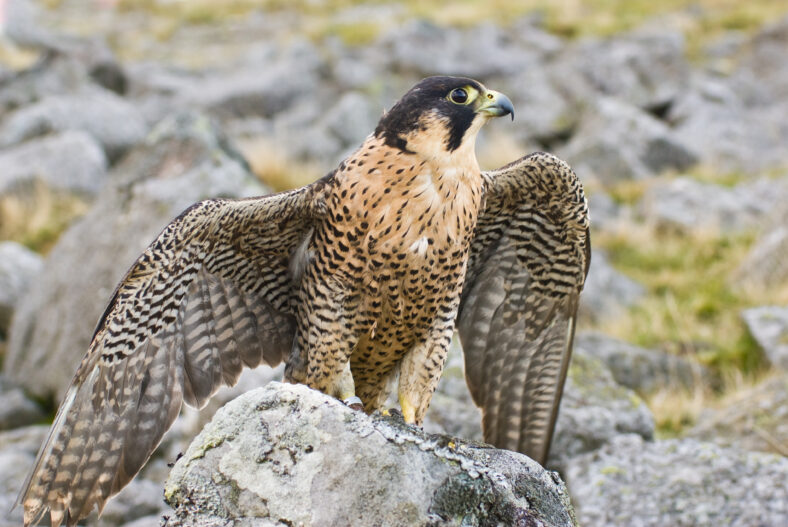Scientists Figured Out Why Peregrine Falcons Have Stripes Under Their Eyes

Falcons are found across the globe, on every continent except for Antarctica. There are 39 species of falcon in the world.
Falcons belong to a group of unrelated birds called raptors, which are characterized by their hooked beaks, sharp talons, and keen eyesight.
Scientists have always been fascinated by the dramatic dark plumage beneath falcons’ eyes, known as malar stripes.
These eye markings have long been thought to reduce the amount of sunlight reflected into their eyes by absorbing it, improving their ability to hunt on bright, sunny days.
However, there has been no evidence to support the theory until now. Researchers at the University of Capetown have provided proof that the malar stripe helps peregrine falcons hunt prey in sunny environments. They also discovered that the malar stripe may have other functions across different falcon species.
The research team analyzed more than 2,000 photos of peregrine falcons, the most widespread raptor species. They assessed the size and darkness of each falcon’s malar stripe and found that the larger and darker the stripe, the more likely the bird lived in a region with higher levels of solar radiation.
The findings supported the idea that the markings evolved as a way to adapt to sunny environments, shielding the falcons’ eyes from glare and allowing them to better spot prey.
Peregrines are among the fastest species in the world. They hunt agile birds like doves and pigeons, so they rely on precise vision, which the malar stripes work to enhance.
The researchers then set out to investigate whether the same pattern could be identified in other falcon species.

Sign up for Chip Chick’s newsletter and get stories like this delivered to your inbox.
They used over 10,000 images of 39 falcon species pulled from two digital databases, including the Macaulay Library from Cornell University.
Again, they examined the size and darkness of malar stripes and compared them to the location in which each image was taken. They discovered that the size of other species’ malar stripes was unrelated to their level of sun exposure.
They also did not detect a pattern of falcons living in sunnier areas having larger and darker stripes. These results suggest that malar stripes serve different purposes, depending on the species.
Some African species, like the Dickinson’s kestrel, did not have any malar stripes at all, while many desert falcons, like the Saker falcon, had smaller stripes.
For peregrines, the solar glare theory still makes sense, but for other species, these markings may have to do with camouflage or social signals rather than sunlight.
The variations in the purpose of malar stripes highlight how complex evolution is. The stripes likely developed according to the falcons’ habitats and lifestyles.
This research has potential implications for athletes and photography. Dark stripes around an athlete’s eyes or even black around a camera improves contrast sensitivity and reduces glare, which boosts performance.
You can read the study here.
More About:Animals





